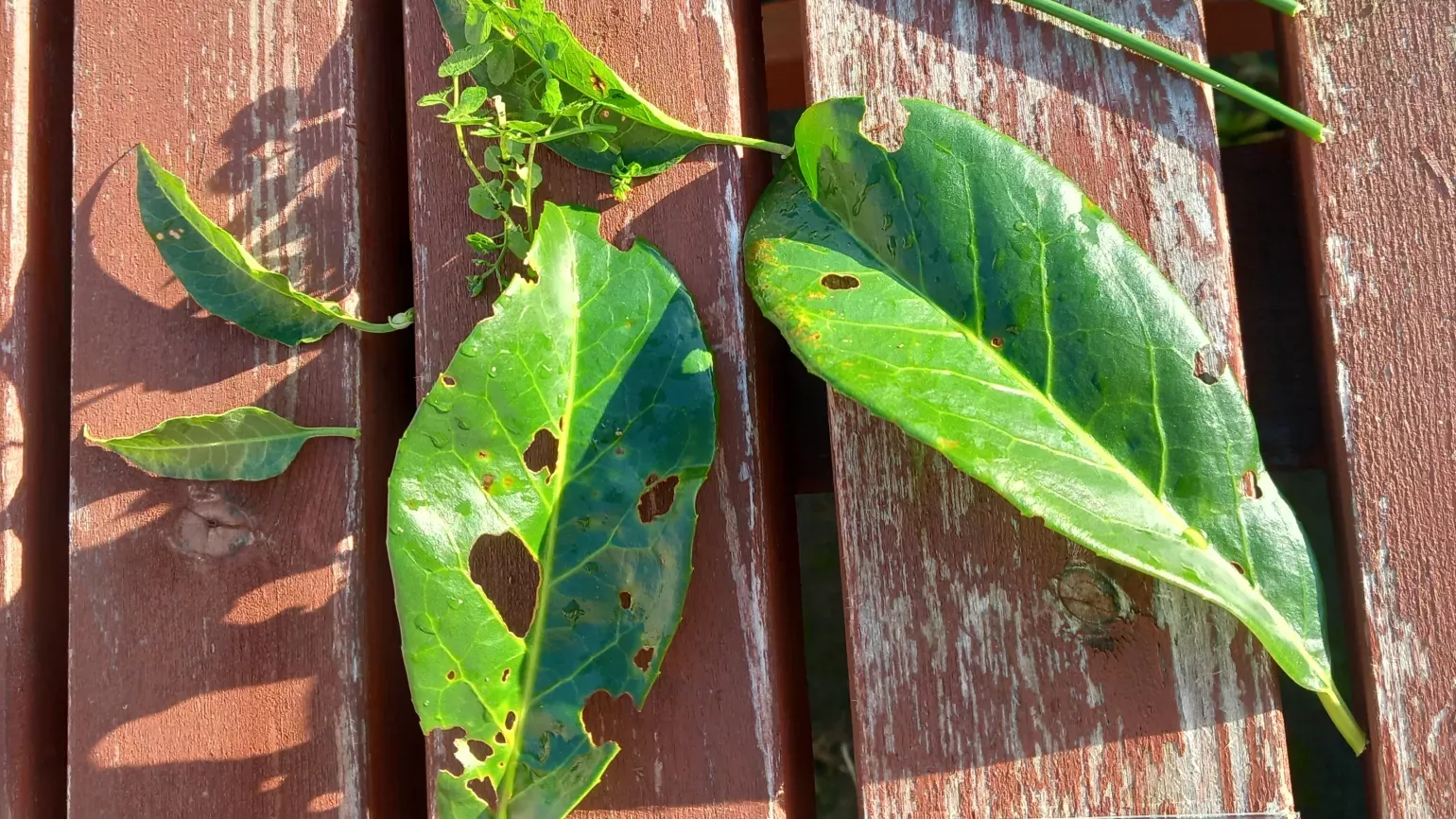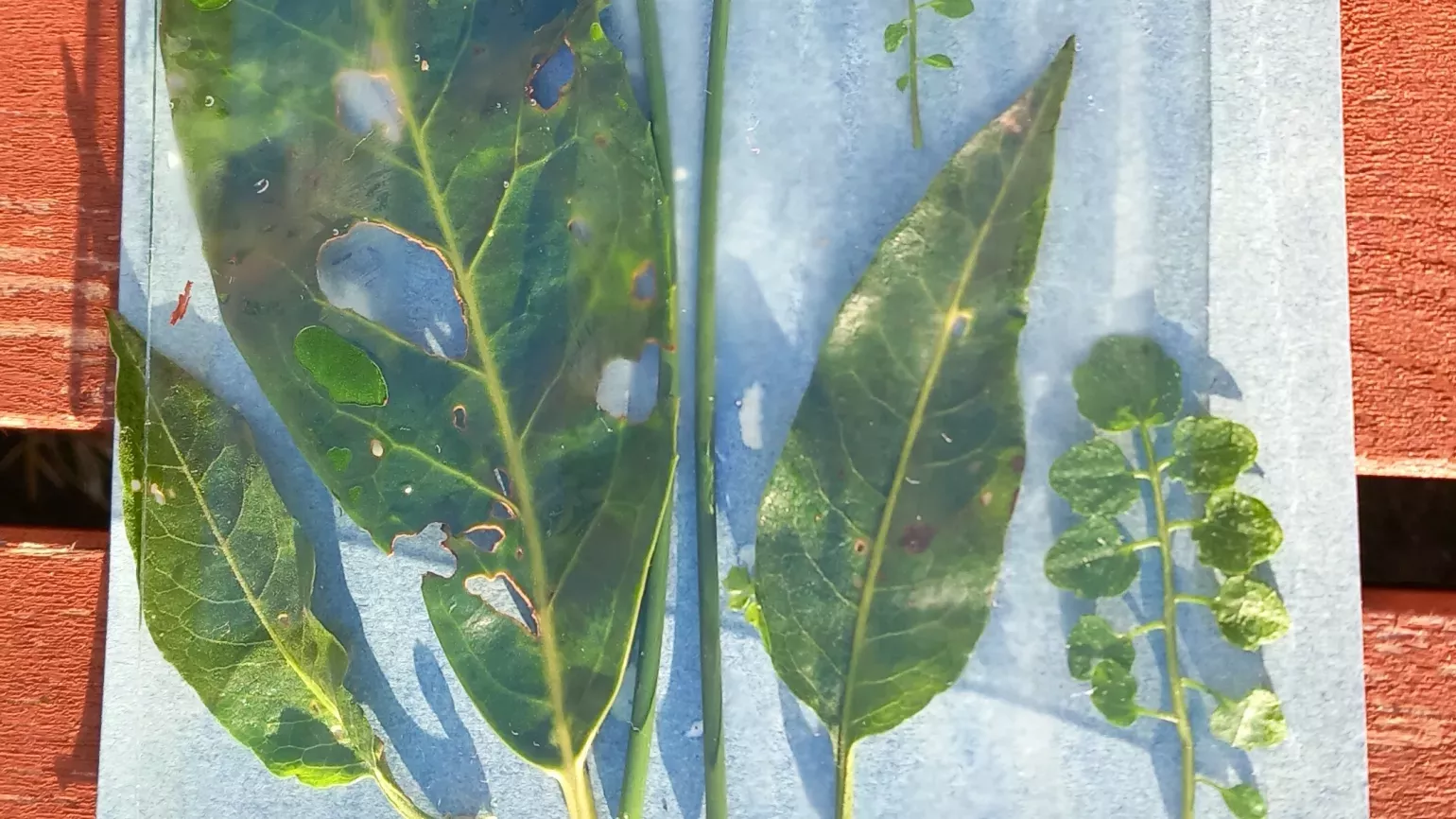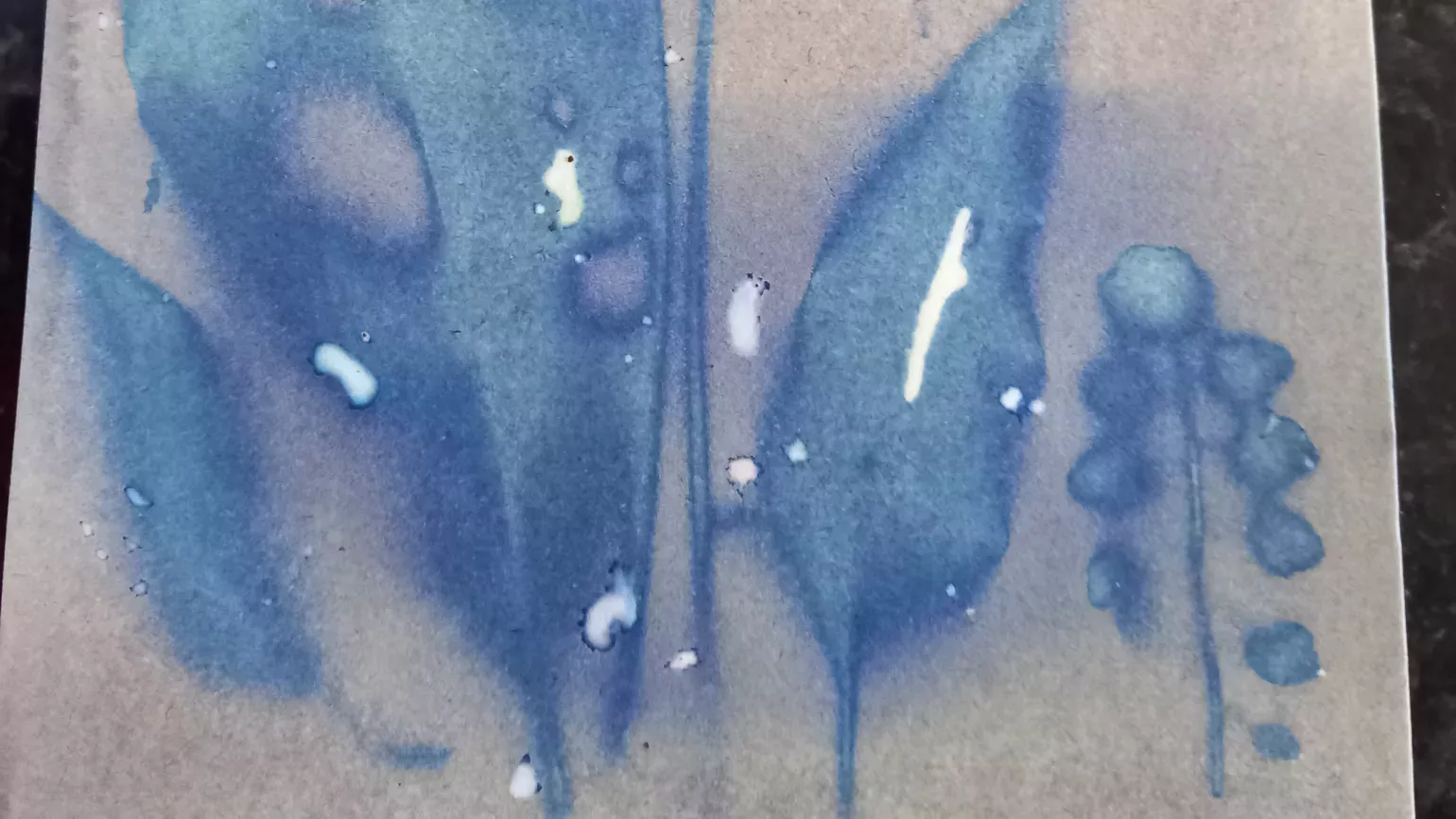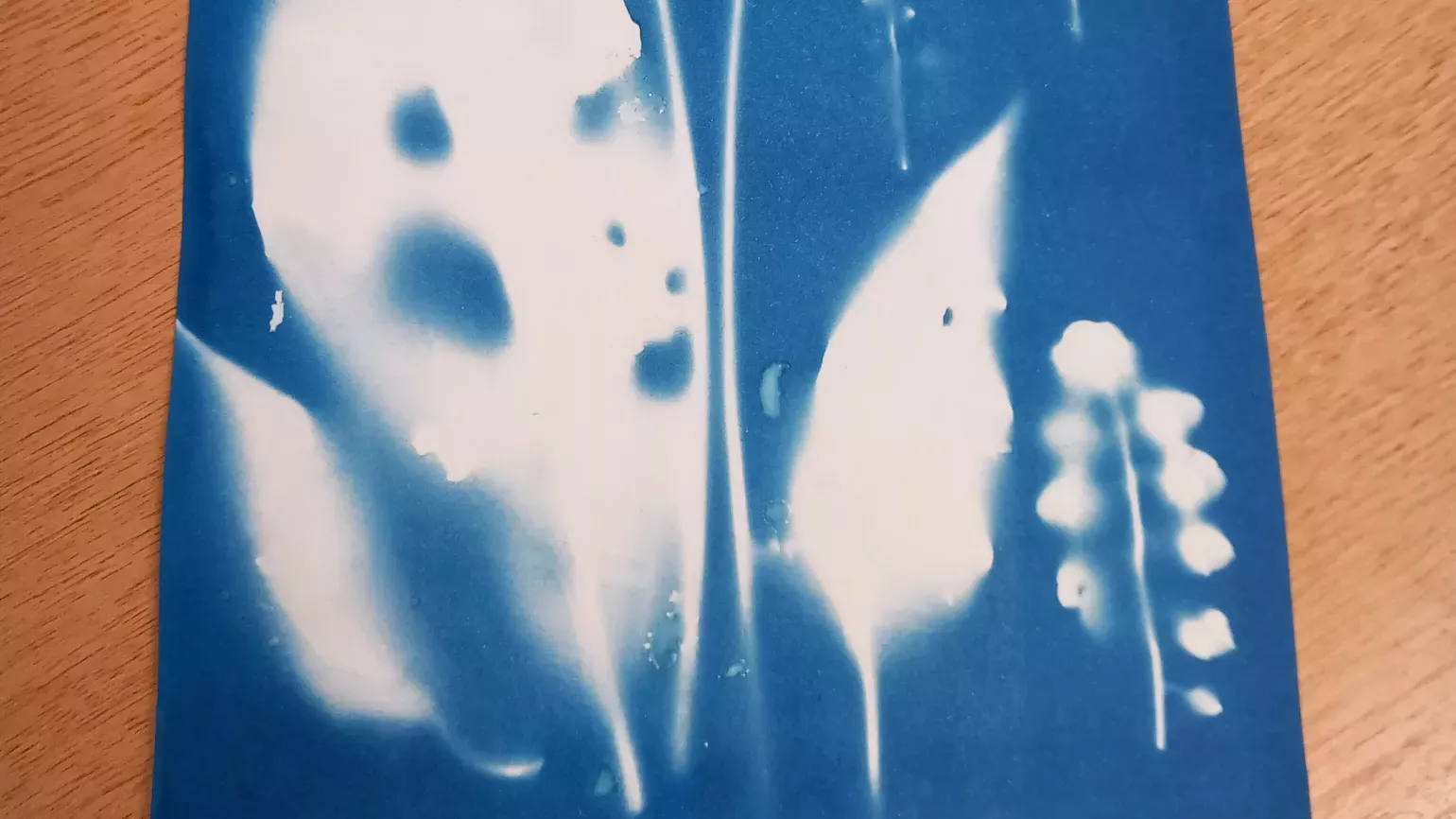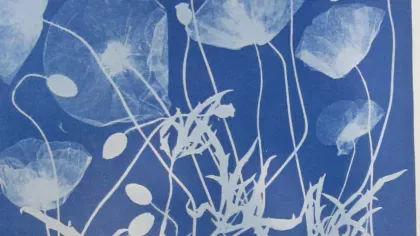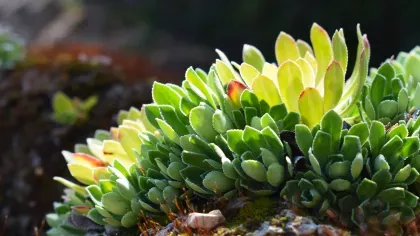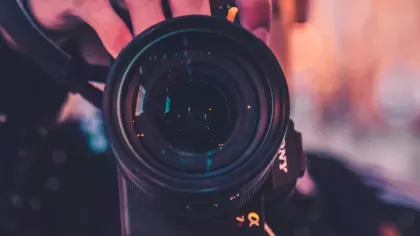28 February 2023
Cyanotypes: The origins of photography
Discover one of the oldest photographic printing processes in the history of photography.

Nature has been the inspiration for many forms of art and literature throughout history.
In fact, it inspired the very first photographically illustrated book.
Cyanotype photography is a camera-less technique that involves laying an object on paper coated with a solution of iron salts before exposing it to UV light and washing with water to create stunning white and Prussian blue images.
Here we delve into the history of cyanotypes and how to create your very own at home.
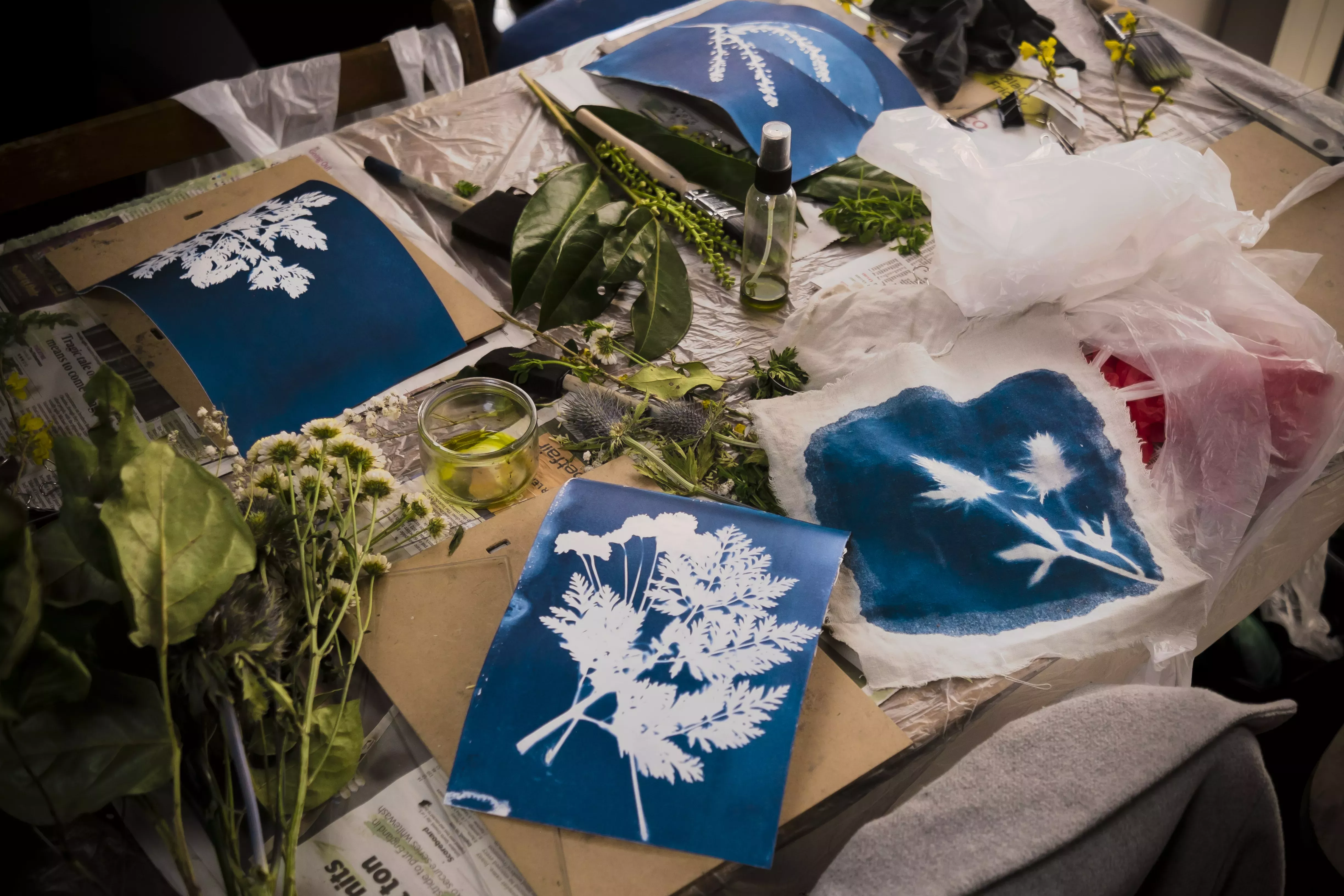
Sir John Herschel: The inventor of cyanotypes
Sir John Herschel began by experimenting with sun prints (or photograms). These were one of the earliest forms of photography and involved laying an object on chemically-treated paper before exposing it to a light source.
Later, in 1842, he used paper coated with a solution of iron salts, sun exposure and a water wash to create the very first cyanotype – a white image on a deep blue background.
This method proved to be easier, cheaper, and more durable than the previous silver-based method.
It may not look like the type of photography that we are used to, but Herschel was able to use cyanotype printing to make copies of his notes and diagrams.
Did you know? The term 'blueprint' comes from the use of cyanotypes.
Anna Atkins: The first photo book
Anna Atkins produced what is known as the first photographic illustrated book, Photographs of British Algae: Cyanotype Impressions, in 1843.
Atkins was a talented illustrator but wanted to find a more accurate way to depict the structure of a plant.
Her passion for botany along with the discovery of cyanotypes meant that over the span of 10 years she was able to create 3 volumes of work, representing a key step in the history of scientific illustration.
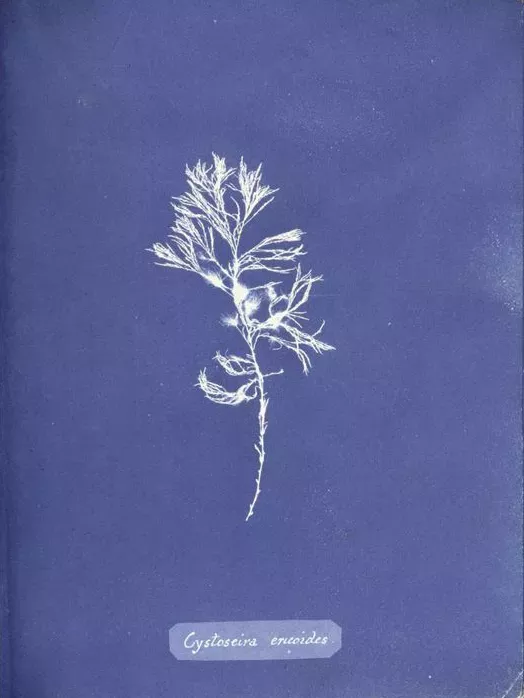
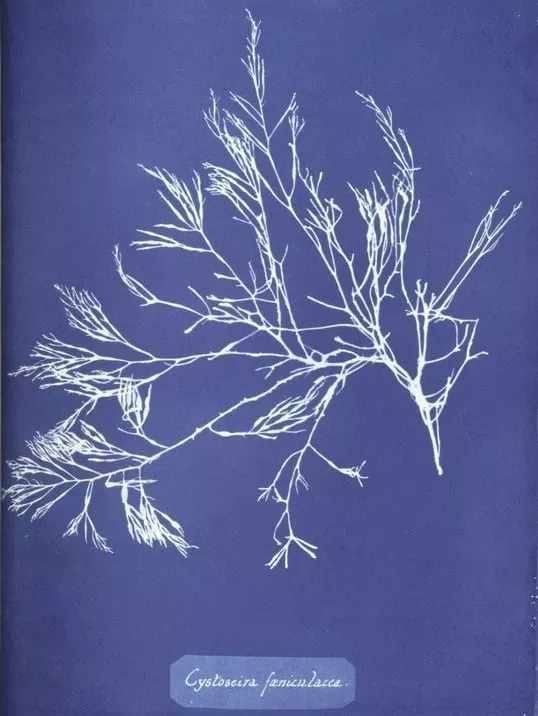
How do cyanotypes work?
When ferric ammonium citrate or ferric ammonium oxalate is mixed with potassium ferricyanide, it becomes sensitive to UV light.
These chemicals can be painted onto paper or fabric and left to dry in a dark room. Once dry, objects can be arranged onto the paper and placed in the sun.
The UV rays from the sun react with the chemicals on the paper to create the recognisable cyan-blue background. Where the paper has been covered with an object it will remain white.
Once the chemicals are rinsed off with water, fixing the print so it is no longer sensitive to the sun, you are left with a beautiful print.
How to create your own cyanotype
1) Pick your specimens. Collect leaves or natural material from your garden or local green space, or find objects around your home.
2) Prepare your material. Some kits come with pre-treated paper, otherwise follow the instructions in your cyanotype printing kit.
3) Arrange your specimens. A piece of glass can be placed over your specimens for a sharper image.
4) Place in the sun. It can be a clear hot summer's day or a cloudy winter's day, there will still be UV rays that will help the chemical reaction. The amount of time it needs to be left in the sun, however, may vary depending on the time of the year. 30 minutes on a clear winter's day did the trick here.
5) Once developed enough, take your print inside and keep it out of the sunlight. You will notice that the print looks reversed.
6) It is now time to rinse your print with water. This will wash off any solution and fix the image so that it will no longer be affected by the sun.
7) Leave your print to dry. Once dry you will be left with your own beautiful cyanotype print.
